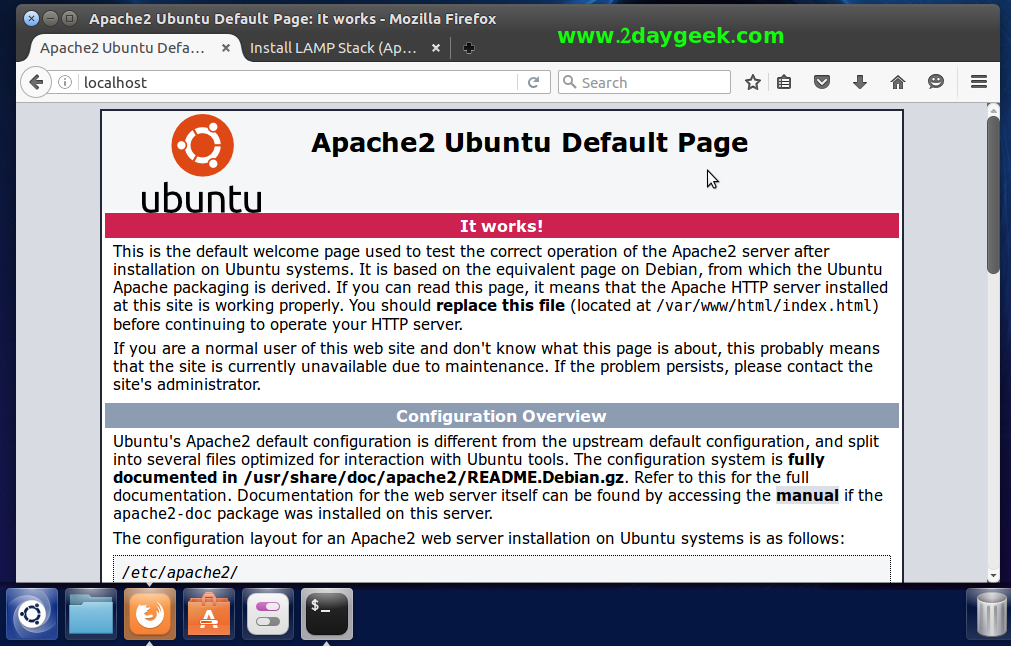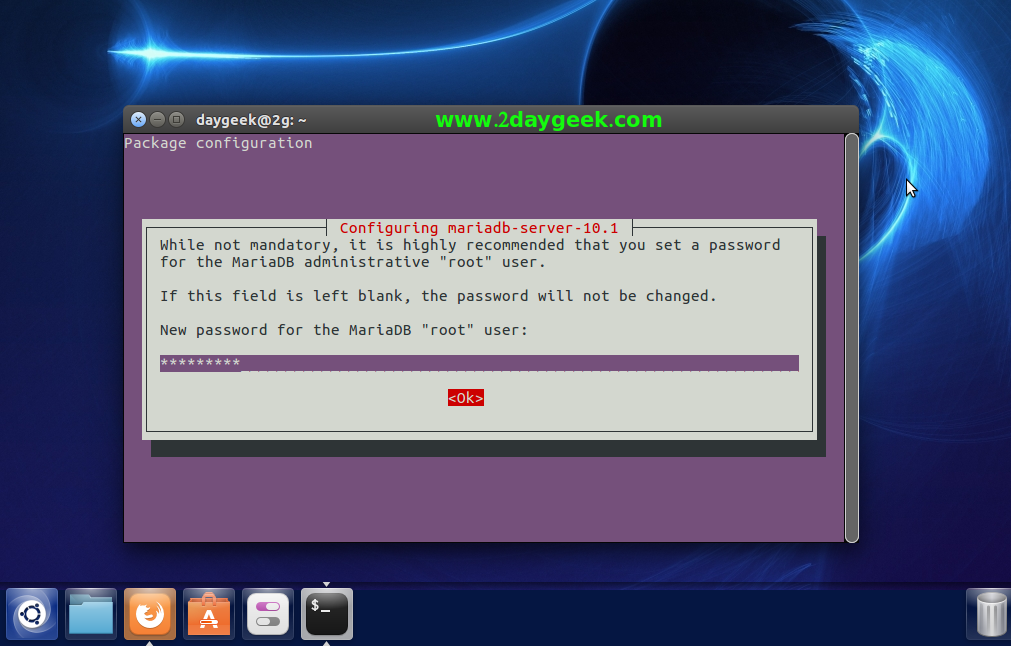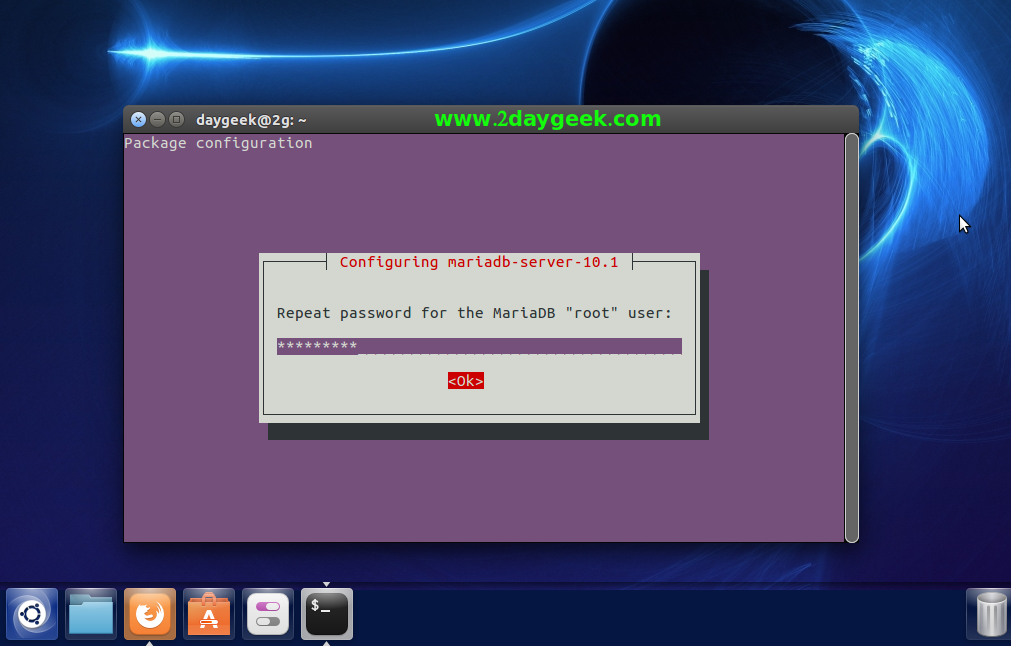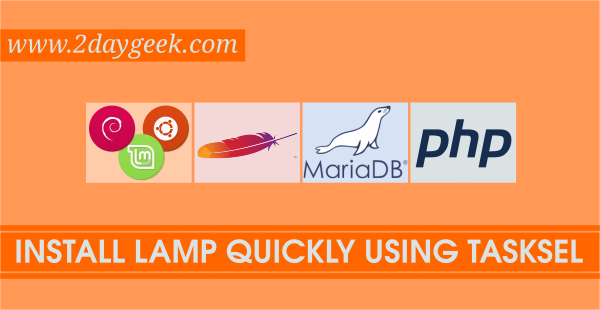LAMP Stands for Linux, Apache, MySQL, MariaDB, MongoDB, PHP, PERL, PYTHON, PhpMyAdmin which is taking first letter of each of the packages. LAMP is combination of operating system and bunch of open-source software which is developed by different organizations.
Why we need LAMP ? If you want to build a normal website or dynamic website with awesome CMS application such as WordPress, Joomla, Moodle, Drupal, etc.., you should need LAMP environment to make it work.
Whoever developing PHP based websites or application or portal they must needed the LAMP stack to their system to work/develop the project further. In this tutorial, we are going to show you about LAMP Stack installation in Ubuntu 15.10 which will applicable for Ubuntu 16.04 & 15.10, 15.04, 14.10, 14.04, 13.10.
1) Update your system upto date
Use the below command’s to keep your system upto date.
[Update Repository Index] $ sudo apt-get update [Update System packages to Latest Version] $ sudo apt-get upgrade
2) Install Apache
Apache is a Free open-source multi-platform web server. It’s support wide range of language such as (.html, .php, .pl, .cgi, etc..,) and virtual domains. The default apache/web root directory location in Ubuntu are /var/www/html
[Install Apache} $ sudo apt-get install apache2 [Start, Enable & Check Status os Apache service on Systemd Systems] $ sudo systemctl start apache2 $ sudo systemctl enable apache2 $ sudo systemctl status apache2 [Start, Enable & Check Status of Apache service on SysVinit Systems] $ sudo service apache2 start $ sudo chkconfig httpd on $ sudo service apache2 status
Open your web browser and navigate to http://localhost/ or http://your-server-ip-address/ or http://127.0.0.1/

Now, You have successfully installed and configured apache on your Ubuntu system.
3) MariaDB installation
MariaDB is a drop-in replacement for MySQL. MariaDB is opensource relational database management system (RDBMS) which is supporting database access.
By default all the distribution included MariaDB 5.x to own repository, if you want to install, simply you can run apt-get install mariadb-server.
If you want to install MariaDB 10.x, you need to add MariaDB 10.x repo additionally on your system because it’s not included in distribution repository.
[Add MariaDB 10.1 Repo]
$ sudo apt-get install software-properties-common
$ sudo apt-key adv --recv-keys --keyserver hkp://keyserver.ubuntu.com:80 0xcbcb082a1bb943db
$ sudo add-apt-repository 'deb [arch=amd64,i386] http://mirrors.opencas.cn/mariadb/repo/10.1/ubuntu '$(lsb_release -cs)' main'
$ sudo apt-get update
$ sudo apt-get -y install mariadb-server
Start, enable & check status of MariaDB service on your System
[Start, enable & check status of MariaDB service on systemd System] $ sudo systemctl start mariadb.service $ sudo systemctl enable mariadb.service $ sudo systemctl status mariadb.service [Start, enable & check status of MariaDB service on Sysvinit System] $ sudo service mysqld start $ sudo chkconfig mysqld on
While installing MariaDB server, it will ask you to set root password for MariaDB.

Confirm the root password for MariaDB.





T-h-a-n-k-s !
This seems to be like walk in the park procedure .. but for us (newbies) is very handy.
Thanks
Dod
Welcome.